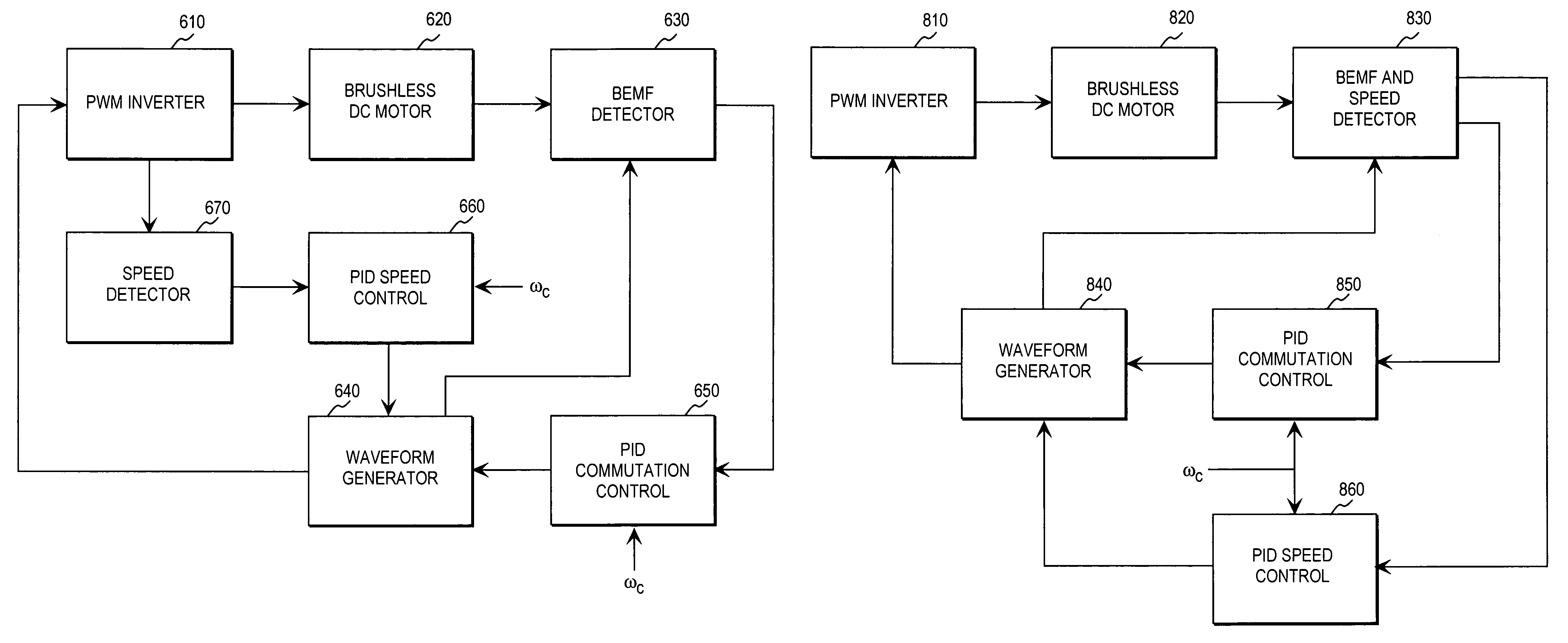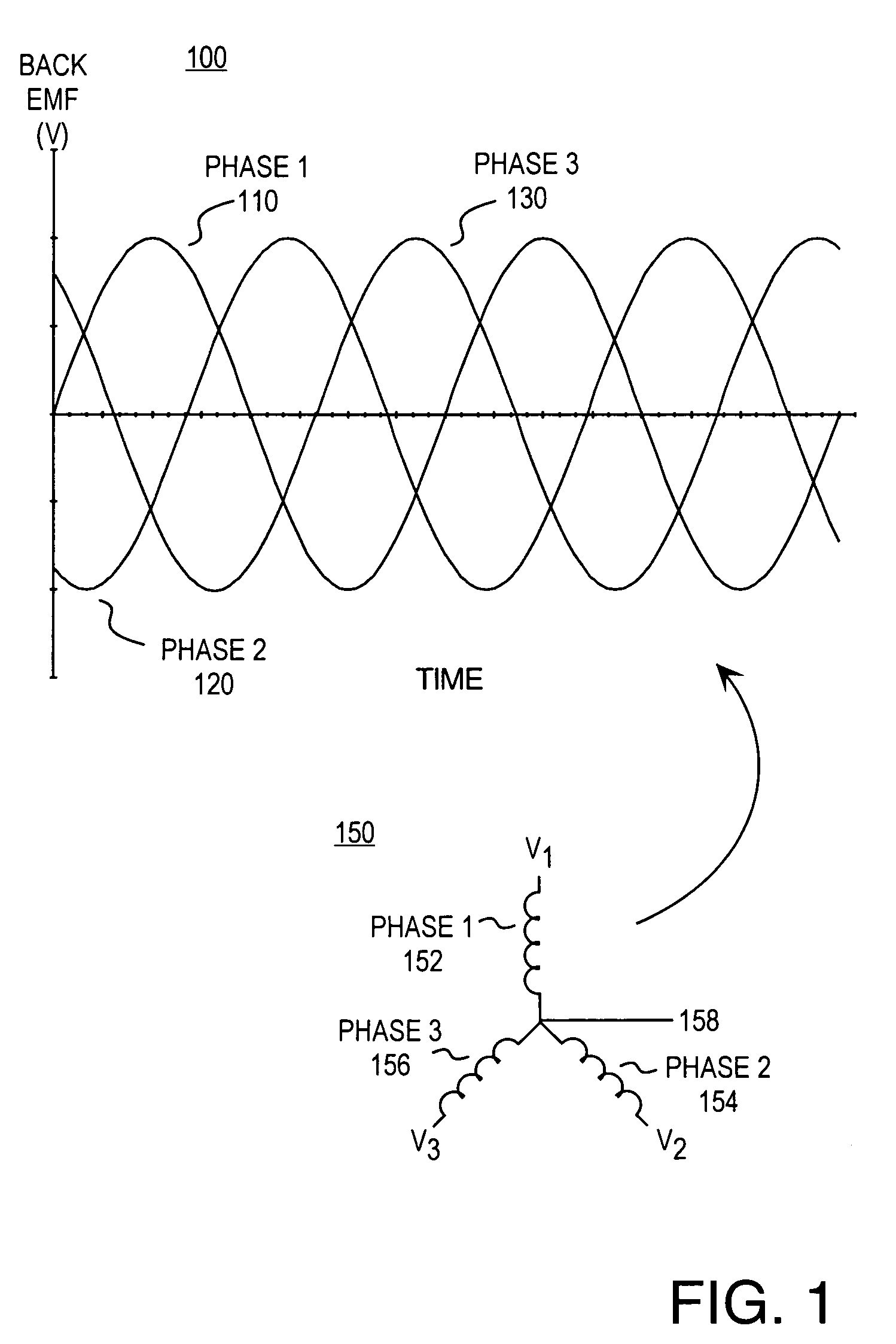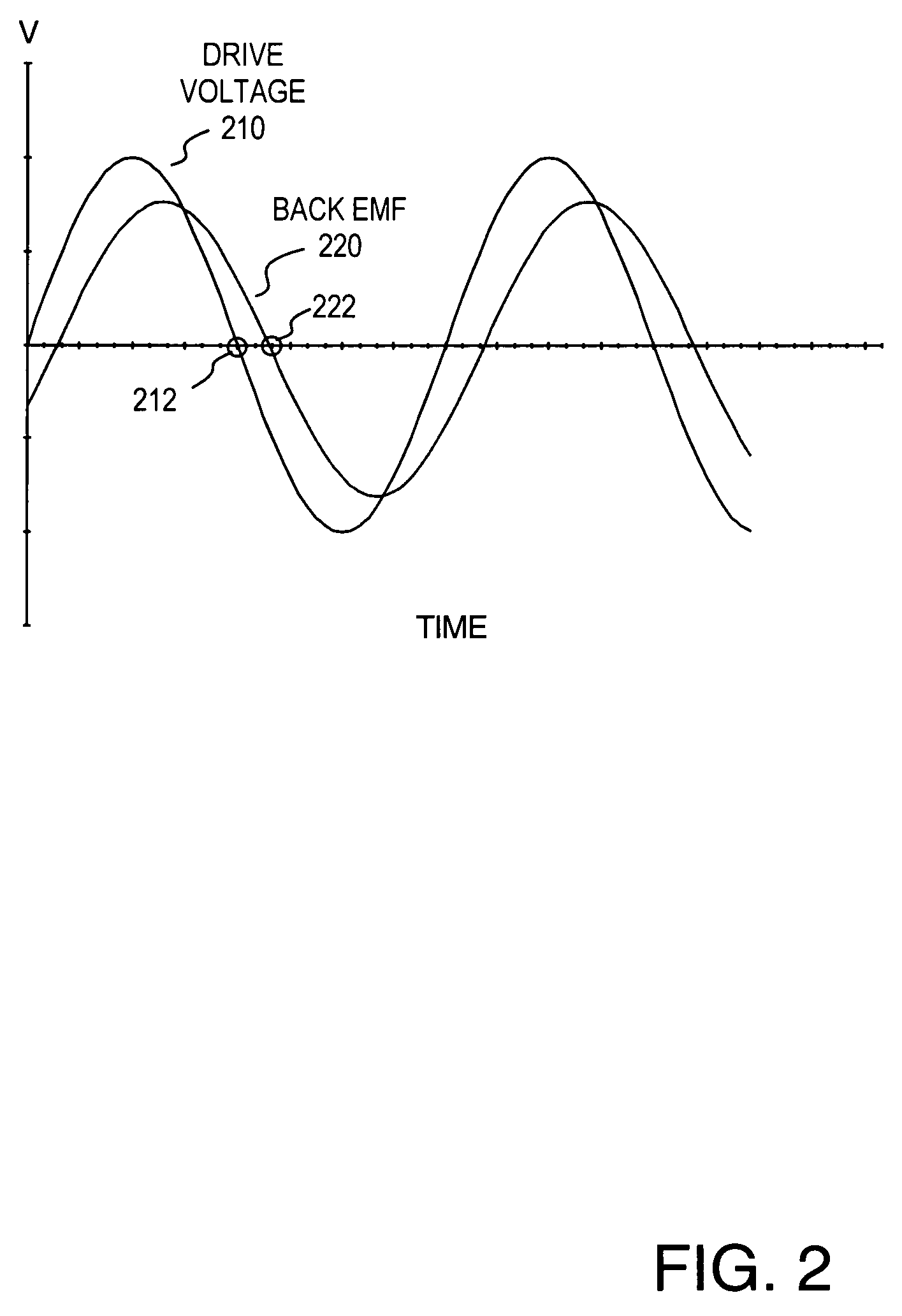Method and apparatus for controlling brushless DC motors in implantable medical devices
a brushless dc motor and implantable medical device technology, applied in the direction of electric controllers, dynamo-electric converter control, instruments, etc., can solve the problems of false triggering, unsuitable center tap in medical implant applications, and transportation needs to be provided
- Summary
- Abstract
- Description
- Claims
- Application Information
AI Technical Summary
Benefits of technology
Problems solved by technology
Method used
Image
Examples
Embodiment Construction
[0022]Conventional DC (direct current) motors typically have a field system comprising permanent magnets to establish magnetic flux. A commutator is used to distribute current to a plurality of coils or windings on an armature. The commutator is in contact with a plurality of brushes coupled to a power supply. The commutator ensures that current is distributed to the windings in a manner that creates a torque resulting in rotation of the motor's rotor. As the rotor turns, the commutator changes the current distribution to maintain torque. Generally, the commutation of a conventional DC motor is achieved mechanically through the use of slip rings and brushes.
[0023]Brushless DC motors are distinguished from conventional DC motors by the lack of brushes, slip rings, or other mechanical commutators. Commutation for brushless DC motors is provided electronically rather than mechanically. The brushless DC motor is also referred to as a brushless permanent magnet (PM) motor or an AC (alter...
PUM
 Login to View More
Login to View More Abstract
Description
Claims
Application Information
 Login to View More
Login to View More - R&D
- Intellectual Property
- Life Sciences
- Materials
- Tech Scout
- Unparalleled Data Quality
- Higher Quality Content
- 60% Fewer Hallucinations
Browse by: Latest US Patents, China's latest patents, Technical Efficacy Thesaurus, Application Domain, Technology Topic, Popular Technical Reports.
© 2025 PatSnap. All rights reserved.Legal|Privacy policy|Modern Slavery Act Transparency Statement|Sitemap|About US| Contact US: help@patsnap.com



